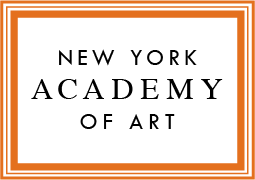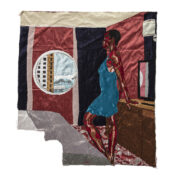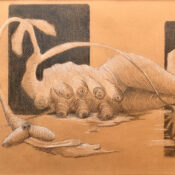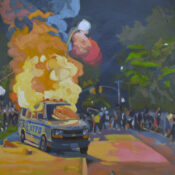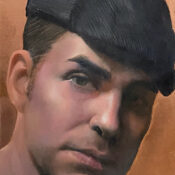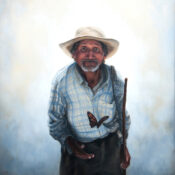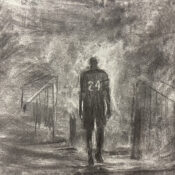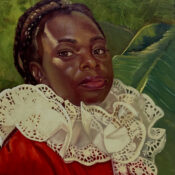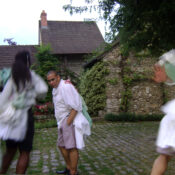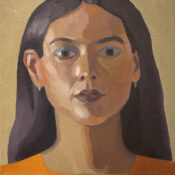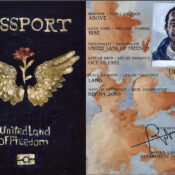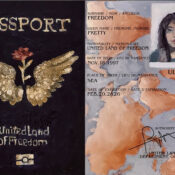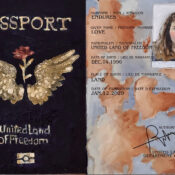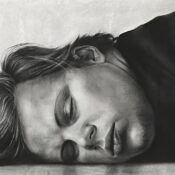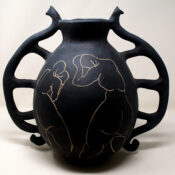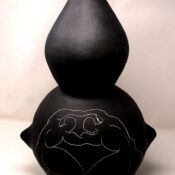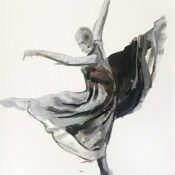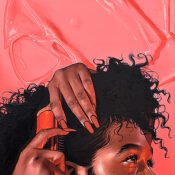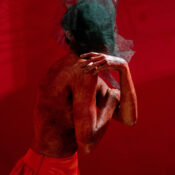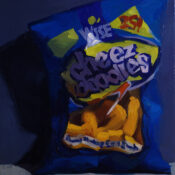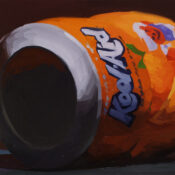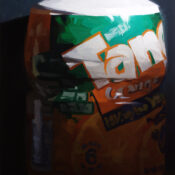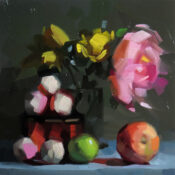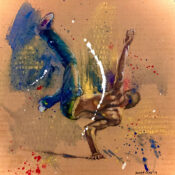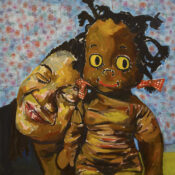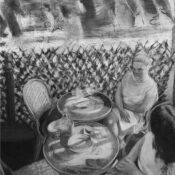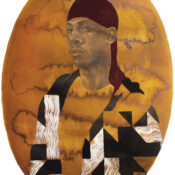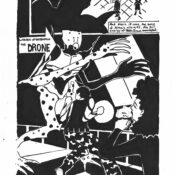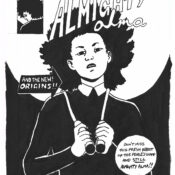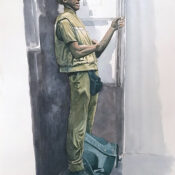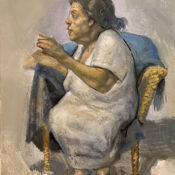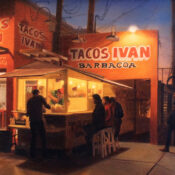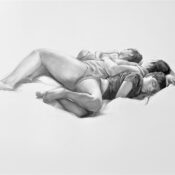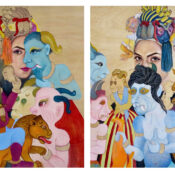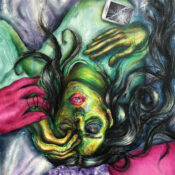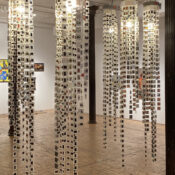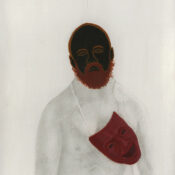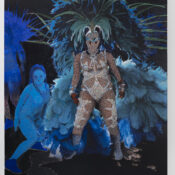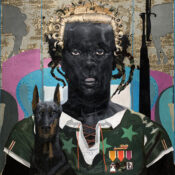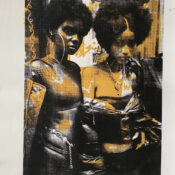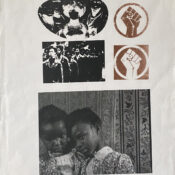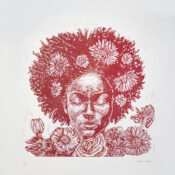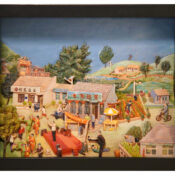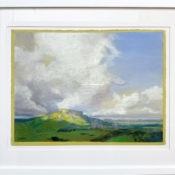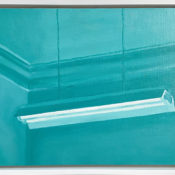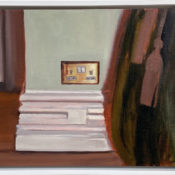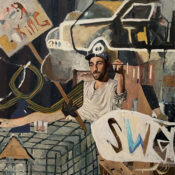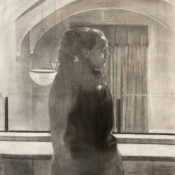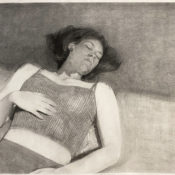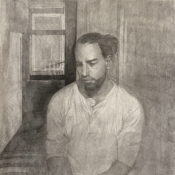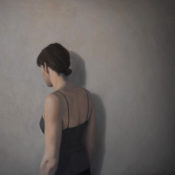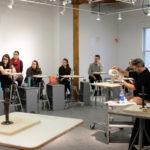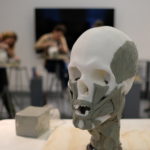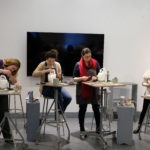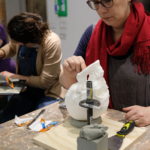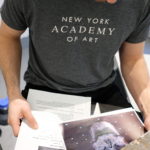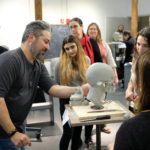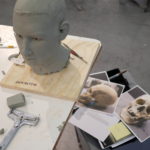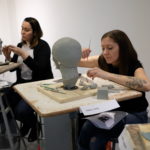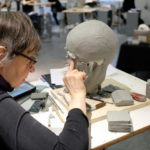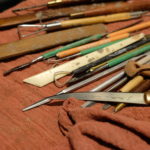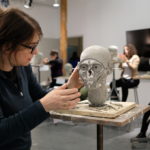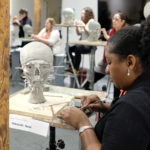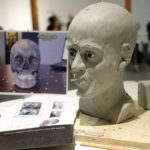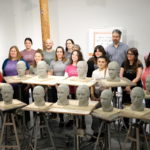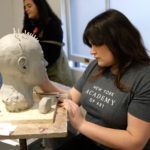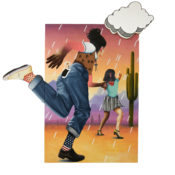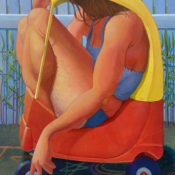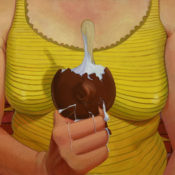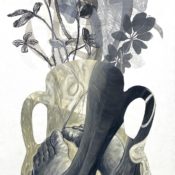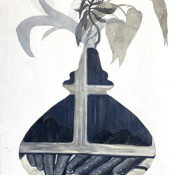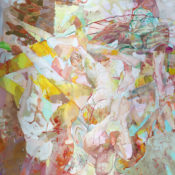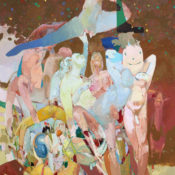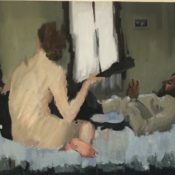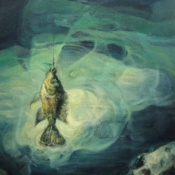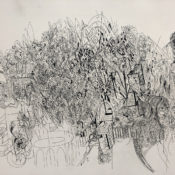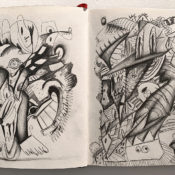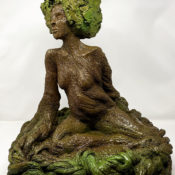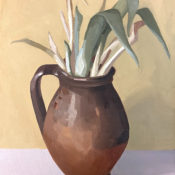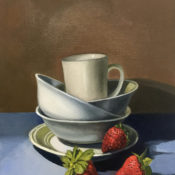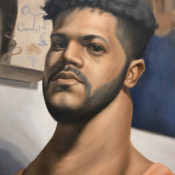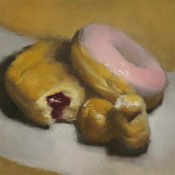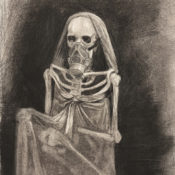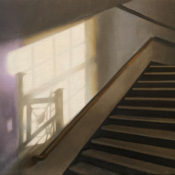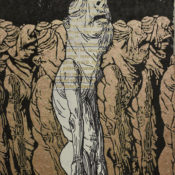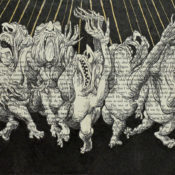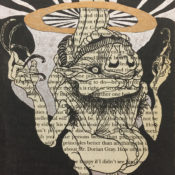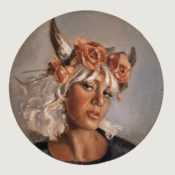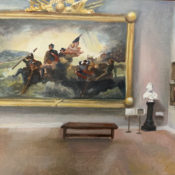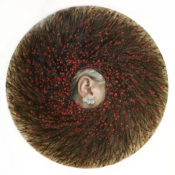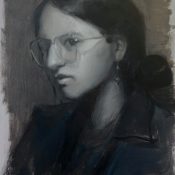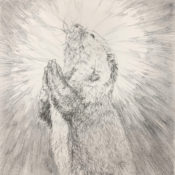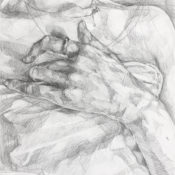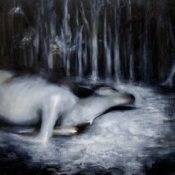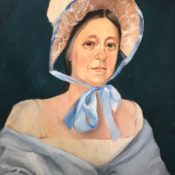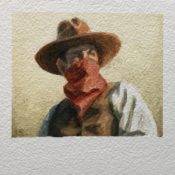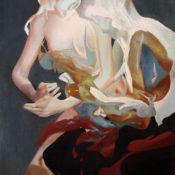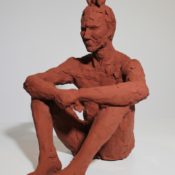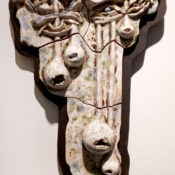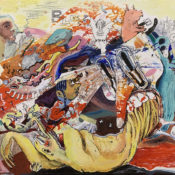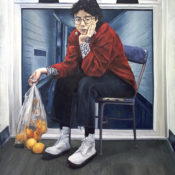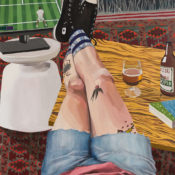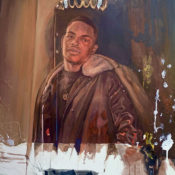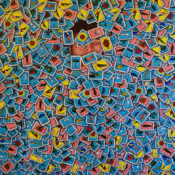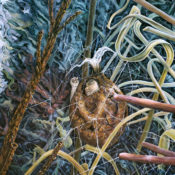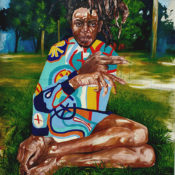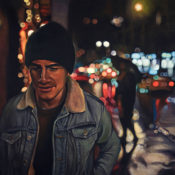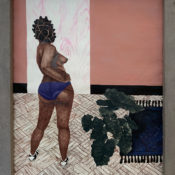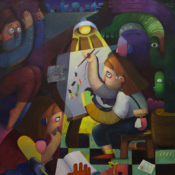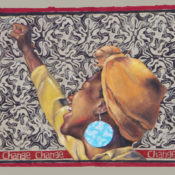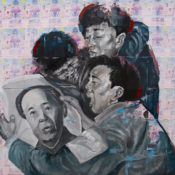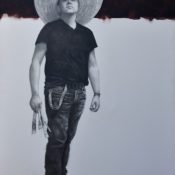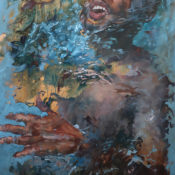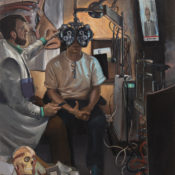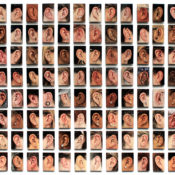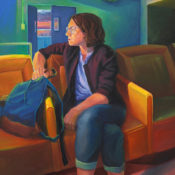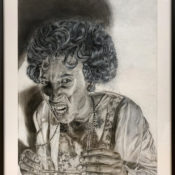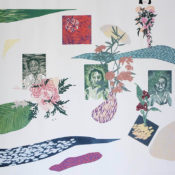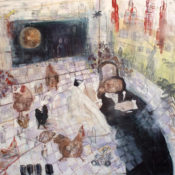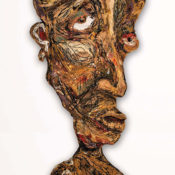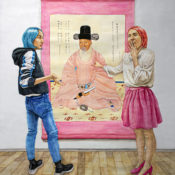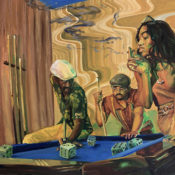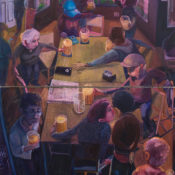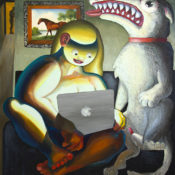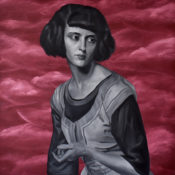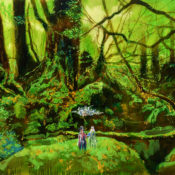Public Art on Public Transit: Sandra Bloodworth, Director of the MTA Art & Design in conversation with Peter Drake
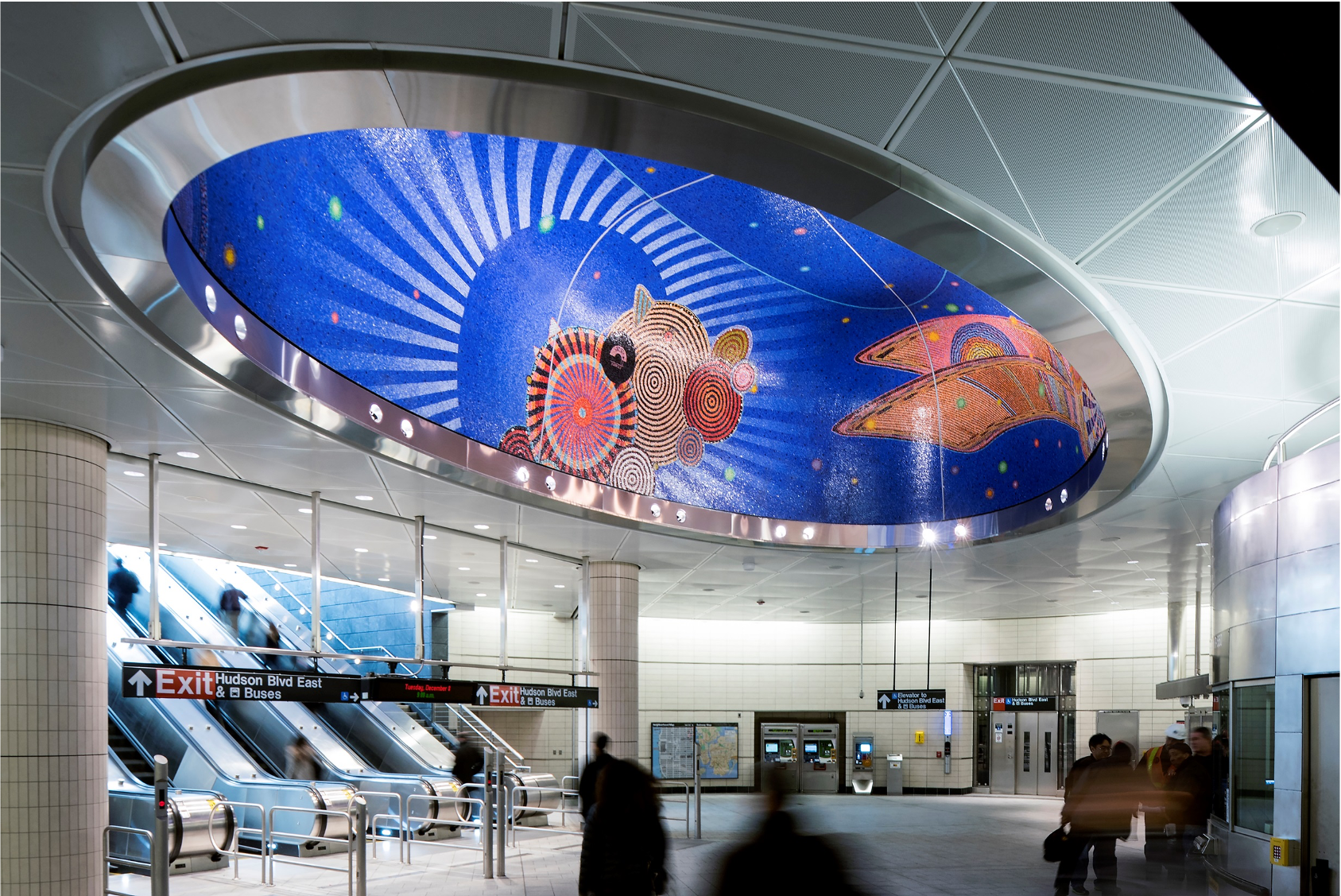
Funktional Vibrations (2015) © Xenobia Bailey, NYCT 34th Street–Hudson Yards Station. Commissioned by MTA Arts & Design. Photo: Sid Tabak.
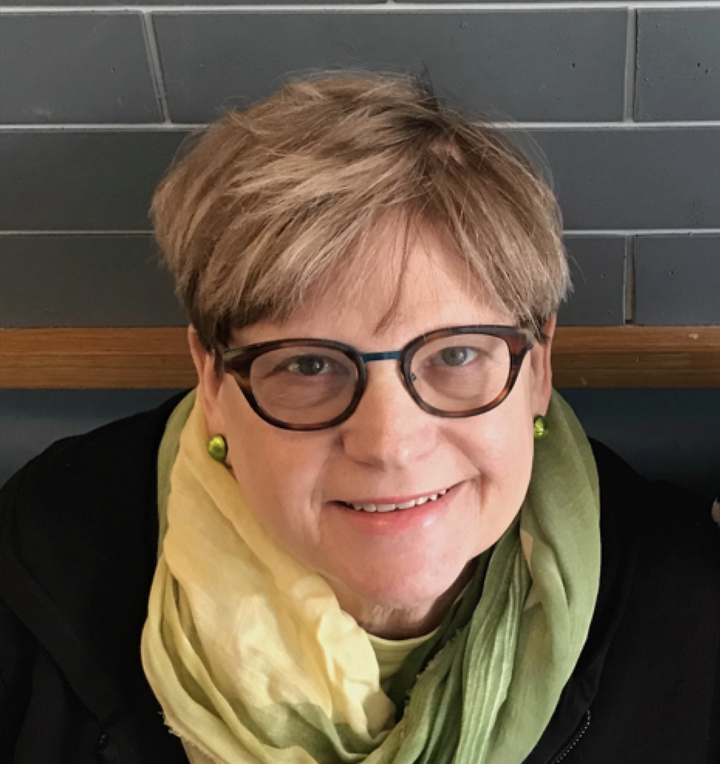 Sandra Bloodworth is Director of Metropolitan Transportation Authority (MTA) Arts & Design (A&D), the program responsible for visual and performing arts throughout the transit system. Sandra joined MTA Arts & Design as a manger in 1988 and has served as the director for 24 years. She has worked with hundreds of artists through A&D’s permanent art commissions, digital arts, graphic art, photography, poetry, musical performances and special programs, all of which are intended to engage riders, enrich stations, and encourage the use of mass transit. Under Sandra’s leadership the A&D Percent for Art program has become one of the largest and most diverse collections of public art in the world.
Sandra Bloodworth is Director of Metropolitan Transportation Authority (MTA) Arts & Design (A&D), the program responsible for visual and performing arts throughout the transit system. Sandra joined MTA Arts & Design as a manger in 1988 and has served as the director for 24 years. She has worked with hundreds of artists through A&D’s permanent art commissions, digital arts, graphic art, photography, poetry, musical performances and special programs, all of which are intended to engage riders, enrich stations, and encourage the use of mass transit. Under Sandra’s leadership the A&D Percent for Art program has become one of the largest and most diverse collections of public art in the world.
Sandra is a recipient of the Gari Melchers Memorial Medal for furthering the profession of fine arts and was awarded the Fund for the City of New York’s Sloan Public Service Award in recognition of her work in the field of public art. She is co-author of New York’s Underground Art Museum, published by the Monacelli Press. Sandra is a practicing artist and holds degrees in Art and Arts Education, including a B.S. from Mississippi College, an M.A. from the University of Mississippi and an M.F.A. from Florida State University. She has taught at Florida State University, the University of Mississippi and the Department of Art and Arts Professions graduate program at New York University, and frequently speaks on the topic of art in transit.
Artist Talk: Billie Zangewa
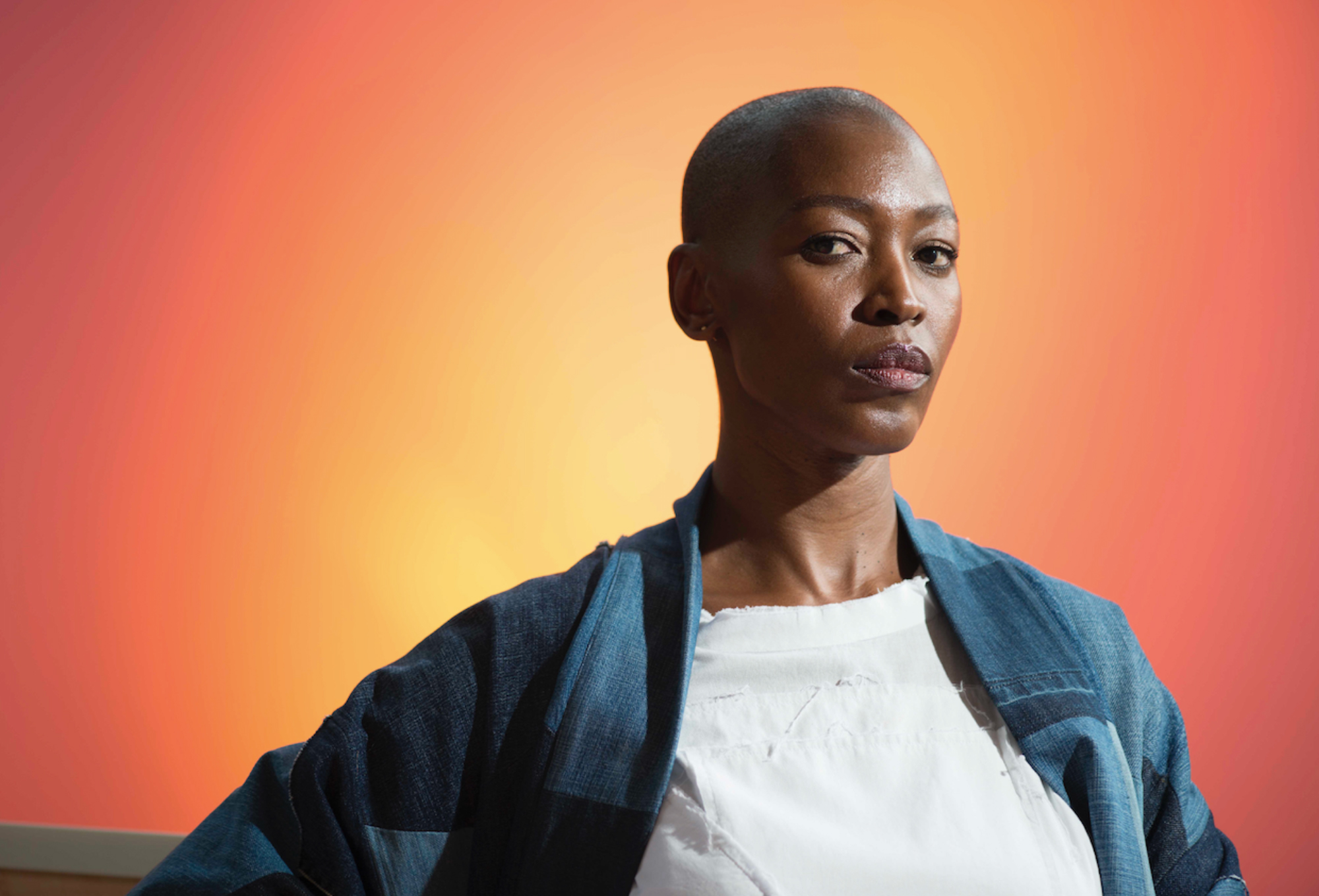
Photo credit: Namsa Leuba
Billie Zangewa (b. 1973, Blantyre, Malawi; lives and works in Johannesburg, South Africa) creates intricate collages composed of hand-stitched fragments of raw silk. These figurative compositions explore contemporary intersectional identity in an attempt to challenge the historical stereotype, objectification, and exploitation of the black female form. Beginning her career in the fashion and advertising industries, Zangewa employs her understanding of textiles to portray personal and universal experiences through domestic interiors, urban landscapes, and portraiture. Her earliest works were embroideries on found fabrics depicting remembered botanical scenes and animals from Botswana, where the artist was raised, but she soon transitioned to creating cityscapes, focusing on her experience as a woman in the city of Johannesburg and her personal relationships. These works explored her experience of the male gaze, leading her to begin to think more critically about how women view themselves and what the visualization of the female gaze, through self-portraiture, could look like.
After the birth of her son, Zangewa began making her well-known domestic interiors to explore the shift in focus from self-examination and femininity to motherhood and the home. Often referencing scenes or experiences from everyday life, Zangewa has stated that she is interested in depicting the work done by women that keeps society running smoothly, but which is often overlooked, undervalued, or ignored. Zangewa refers to this as “daily feminism,” which can be considered a contemporary version of “the personal is political.” Through the method of their making and their narrative content, Zangewa’s silk paintings illustrate gendered labor in a socio-political context, where the domestic sphere becomes a pretext for a deeper understanding of the construction of identity, questions around gender stereotypes, and racial prejudice.
Zangewa received her BFA from Rhodes University, Grahamstown, South Africa in 1995. Solo exhibitions of her work have been organized by Galerie Templon, Paris, France (2020); Afronova Gallery, Grand Palais, Paris, France (2017); Johann Levy Gallery, Paris, France (2008); and Gerard Sekoto Gallery, Johannesburg, South Africa (2005). Recent group exhibitions featuring her work include Alpha Crucis, Astrup Fearnley Museet, Oslo, Norway (2020); I Am … Contemporary Women Artists of Africa, Smithsonian National Museum of African Art, Washington, D.C. (2019); Second Life, Museum of African Contemporary Art Al Maaden (MACAAL), Marrakech, Morocco (2018); Pulling at Threads, Norval Foundation, Cape Town, South Africa (2018); Making Africa, Albuquerque Museum, Albuquerque, NM (2018) and the High Museum of Art, Atlanta, GA (2017); The Half-Life of Love, Massachusetts Museum of Contemporary Art, North Adams, MA (2017); A Constellation, Studio Museum Harlem, New York, NY (2016); Making Africa, Centre de Cultura Contemporània de Barcelona, Barcelona Spain, and Kunsthal Rotterdam, Netherlands (2016); Women’s Work, Iziko National Gallery of South Africa, Cape Town, South Africa (2016); Body Talk, Wiels, Brussels, Belgium; Lunds Konsthall, Lund, Sweden and Frac Lorraine, Metz, France (2015); Making Africa, Guggenheim Bilbao, Spain and Vitra Design Museum, Weil am Rhein, Germany (2015); How Far How Near, Stedelijk Museum, Amsterdam, Netherlands (2014); and The Progress of Love, Menil Collection, Houston, TX (2012).
Zangewa’s work is in several public and private collections including the Centre Pompidou, Paris, France; Hood Museum of Art, Dartmouth College, Hanover, NH; Smithsonian National Museum of African Art, Washington, D.C.; Spelman College Museum of Fine Art, Atlanta, GA; Stedelijk Museum, Amsterdam, Netherlands; and Tate Modern, London, United Kingdom. In 2018, Zangewa was selected as the Featured Artist for the FNB Art Joburg Fair.
Parallels & Peripheries
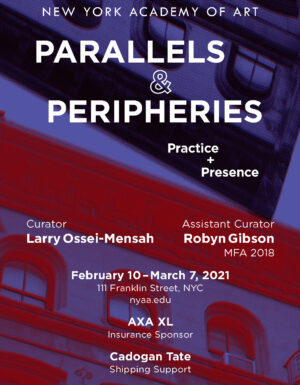
Click here to view the digital catalogue.
Click here to view the virtual show via Eazel.
In lieu of an opening reception, on February 10 at 6:30 pm, curator Larry Ossei-Mensah and assistant curator Robyn Gibson will offer a free guided tour of the show on Instagram Live.
On February 17, the curators held a virtual panel discussion with featured artists Eddie Arroyo, Steven Anthony Johnson II, Jean Shin, and Paul Anthony Smith.
The exhibition is featured in The New York Times as a noteworthy cultural event.
Check out the WhiteHot Magazine interview with curator Larry Ossei-Mensah about the exhibition.
PARALLELS & PERIPHERIESis an ongoing exhibition series curated by Larry Ossei-Mensah investigating how contemporary artists create work constructed from narratives, myths, experiences, and memories that shape personal, political, and societal identities. For this edition of the exhibition, the inquiry seeks to explore how BIPOC artists are cultivating dynamic artistic practices designed to amplify perspectives and points of view that historically have pushed to the margins.
PARALLELS & PERIPHERIES: Practice + Presenceis the fifth iteration of the series focused on how the New York Academy of Art’s BIPOC artistic community (i.e. students, faculty, alumni, and visiting critics) uses their practice and platform to assert their presence within the world while attempting to negotiate issues of race, identity, visibility, and invisibility in a time of social volatility. Moreover, PARALLELS & PERIPHERIES: Practice + Presence intends to use the exhibition as a forum for unpacking the question of what happens when the power dynamics between “center” and “periphery” shift?
Larry Ossei-Mensah
Curator
A PERIPHERAL VIEW
As a Black artist studying at the New York Academy of Art, I often asked myself “Where do I fit?” And more strongly, “Do I even belong here?” Black artists in predominately white institutions often experience a scarcity of faces like our own. We are also immersed in a history of art that excludes our ancestors from the conversation or curriculum. It can get exhausting, but there comes a time when you have to push back and create space for yourself.
It took some time, but I eventually learned how to own the space I occupied, even though it was not originally created with me in mind. I surrounded myself with things that I found inspirational, I researched Black artists who informed my work, I invited talented Black artists and critics into my studio to talk about my work, and I reached out to like-minded individuals to create a support system that became my art community. Taking ownership of one’s space is essential to navigating a society that has always limited access for people of color. The BIPOC community (Black, Indigenous, and other people of color) boldly does so on a daily basis. We take ownership of our narratives, affirming that we see each other, ourselves, and create space for one another in the midst of unfamiliar and sometimes even hostile territory. We are here and, therefore, we belong.
This exhibition is a celebration of the wonderful, dynamic BIPOC talent that has come through the New York Academy of Art. Each of us has had unique experiences, creates different work, and has diverse stories worth telling and sharing. So now we are telling those stories.
Robyn Gibson MFA 2018
Assistant Curator
Parallels & Peripheries: VR Tour Trailer from New York Academy of Art
Tour the virtual exhibition via Eazel below
Courtesy of Eazel / @eazel.art / #Eazel
- Olúwatósìn Adésànyà-Ọlálé̩yẹ (MFA 2020)
- Jessica Alazraki (Continuing Education Student)
- Eddie Arroyo (Visiting Speaker)
- Eddie Arroyo (Visiting Speaker)
- James Xavier Barbour (MFA 2000)
- Carlos Bautista (MFA 2018)
- Dayana Beisenova (MFA 2021)
- Alicia Brown (MFA 2014)
- Ariel Cabrera Montejo (Faculty)
- Leeanna Chipana (MFA 2017)
- David Antonio Cruz (Visiting Speaker)
- Jaki Doyka (MFA 2022)
- Riham ElSadany (MFA 2022)
- Riham ElSadany (MFA 2022)
- Riham ElSadany (MFA 2022)
- Brittany A. Fields (MFA 2013)
- Julio Stanly Flores (MFA 2009)
- Santiago Galeas (MFA 2021)
- Robyn Gibson (MFA 2018)
- Robyn Gibson (MFA 2018)
- Ramiro Gomez (Visiting Speaker)
- Andrae Green (MFA 2008)
- Andrae Green (MFA 2008)
- David R. Ibata (MFA 2010)
- Monica Ikegwu (MFA 2022)
- Steven Anthony Johnson II (MFA 2017)
- Rex Kare II (MFA 1996)
- Helena La Rota López (MFA 2019)
- Dik F. Liu (Faculty)
- Dik F. Liu (Faculty)
- Dik F. Liu (Faculty)
- Dik F. Liu (Faculty)
- Dik F. Liu (Faculty)
- Dik F. Liu (Faculty)
- Alvaro Luna (MFA 2011)
- Beverly McIver (Visiting Speaker)
- Beverly McIver (Visiting Speaker)
- Rebecca Montes (MFA 2020)
- Prinston Nnanna (MFA 2019)
- Prinston Nnanna (MFA 2019)
- Nelson Nuñez (MFA 2019)
- Nelson Nuñez (MFA 2019)
- Nelson Nuñez (MFA 2019)
- Nelson Nuñez (MFA 2019)
- Guno Park (MFA 2011, Faculty)
- Eliana Perez (MFA 2018)
- Lauren Amalia Redding (MFA 2011)
- Hernán J. Rivera (MFA 2000)
- Audrey Rodriguez (MFA 2022)
- Luis Rodriguez (MFA 2020)
- Bahar Sabzevari (MFA 2018)
- Manu Saluja (MFA 2013, Faculty)
- Julie Severino (MFA 2019)
- Jean Shin (Visiting Speaker)
- Darryl Babatunde Smith (MFA 2019)
- Paul Anthony Smith (Visiting Speaker)
- Eric Telfort (MFA 2009)
- Phillip Thomas (MFA 2008, Fellow 2009)
- Telvin Wallace (MFA 2022)
- Telvin Wallace (MFA 2022)
- Jingyi Wang (MFA 2016)
- Tabitha Whitley (MFA 2011)
- Jiannan Wu (MFA 2016, Faculty)
- Jim Xu (MFA 2022)
2020 Kylemore Residency Exhibition
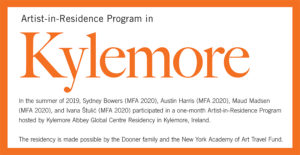
- Sydney Bowers, (MFA 2020)
- Sydney Bowers, (MFA 2020)
- Sydney Bowers, (MFA 2020)
- Sydney Bowers, (MFA 2020)
- Austin Harris, (MFA 2020)
- Maud Madsen, (MFA 2020, Chubb Fellow 2021)
- Maud Madsen, (MFA 2020, Chubb Fellow 2021)
- Maud Madsen, (MFA 2020, Chubb Fellow 2021)
- Ivana Stulic, (MFA 2020)
Forensic Sculpture 2020
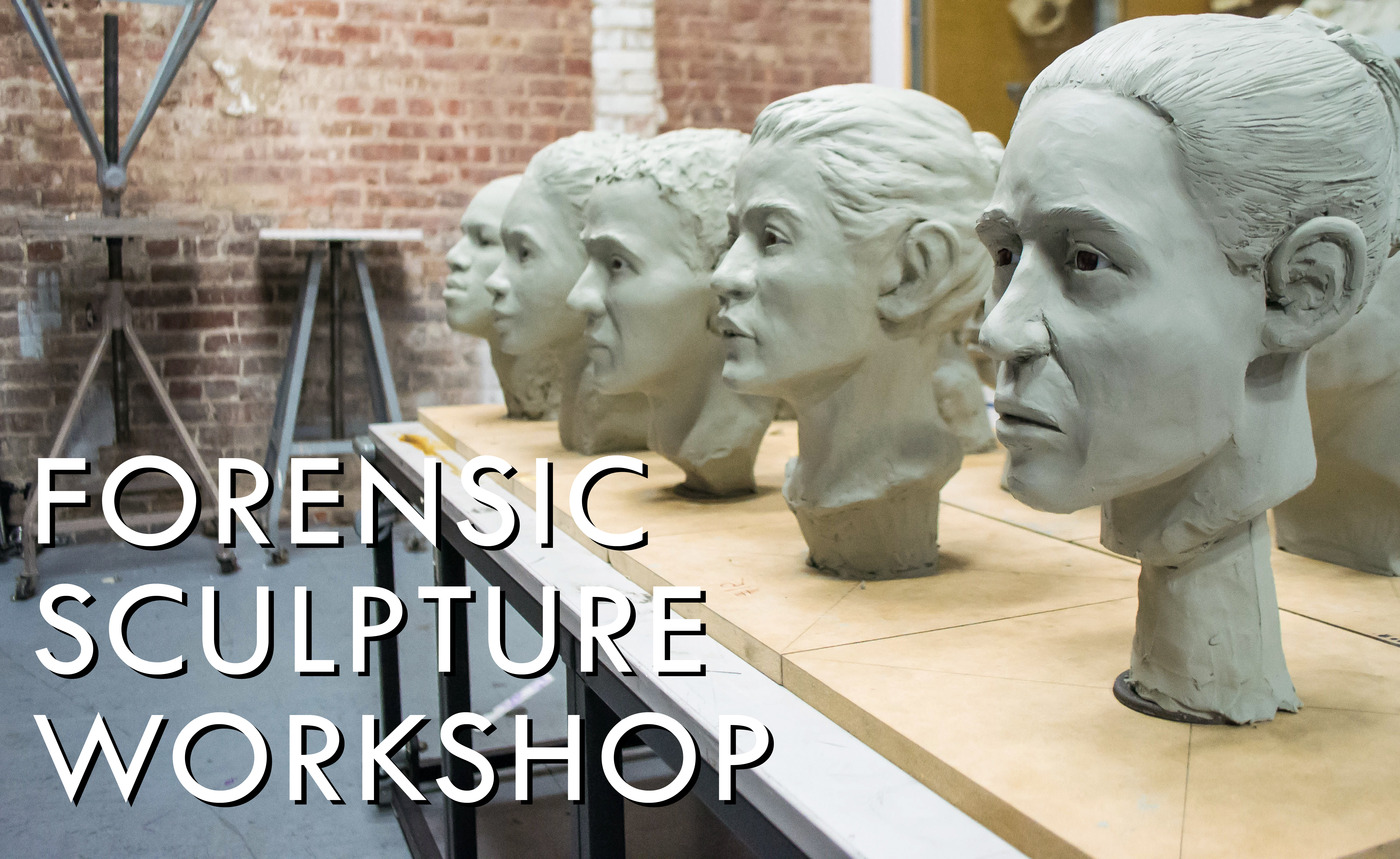
The New York Academy of Art will host an exhibition of clay busts created in its 2020 “Forensic Sculpture” workshop from December 1, 2020- January 10, 2021. This world renowned annual workshop is the result of a unique program developed by the Academy and the New York City Office of the Chief Medical Examiner, in which art students used skulls from actual “cold cases” to recreate the faces of the victims, in the hope of identifying unknown persons. The exhibition is free and open to the public.
The New York Academy of Art is the national leader in teaching contemporary figurative art and its students follow a rigorous technical course of anatomical training and drawing from life. This specific artistic instruction allows Academy students to actively interpret the landscape of a skull and skillfully portray features and flesh. Fifteen students each received a replica of the skull from a real unidentified body and used their sculptural and artistic training to accurately reconstruct the face of the victim in clay.
The workshop was taught by Joe Mullins, a forensic imaging specialist. Bradley J. Adams, the director of forensic anthropology for the Office of the City Medical Examiner, has called clay facial reconstructions the “last-ditch effort” to identify unknown persons, after methods such as fingerprinting, dental records and DNA testing fail to yield results. When the reconstructions are completed, they are photographed and shared widely with law enforcement and missing persons organizations. Over the five years of the program, at least 4 positive identifications have been made from reconstructions made by Academy students.
In 2020, the Royal Canadian Mounted Police asked the Academy if their students could work on 15 Canadian cases from British Columbia and Nova Scotia. Discoveries of the remains date from 1972 to 2019, with discovery sites ranging from a hiking trail to washed ashore on a beach, and include white, indigenous and Black unknown Canadians. The partnership with the New York Academy of Art is the single largest initiative undertaken by law enforcement in Canada to identify unknown remains.
History of the Forensic Sculpture Workshop
The pilot program at the Academy in 2015 marked the first time the Office of the Medical Examiner had ever attempted this project with an art school and resulted in 11 busts created from New York City skeletal remains and one positive identification.
In 2016, the program was expanded from New York to include skulls from a variety of cold cases all over the country, from Delaware to California, and included two 19th-century skulls from unknown soldiers killed during the Civil War and recovered from a battlefield.
In 2018, the Academy partnered with the Pima County, Arizona, Medical Examiner’s office to recreate the faces of 8 unknown border crossers whose skeletal remains had been discovered in the desert.
In 2019, in addition to both New York City cold cases and border migrant cases, the reconstructions included the face of an enslaved African man from colonial-era Connecticut, the renowned “Fortune” belonging to Mattatuck Museum in Waterbury, whose preserved remains have provided information about the history of slavery in New England prior to 1800.
Chubb Fellows & Art Basel Miami 2020
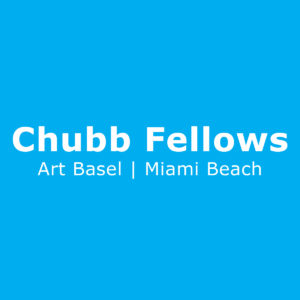
- Trey Abdella (MFA 2019, Chubb Fellow 2020)
- Lydia Baker (MFA 2020, Chubb Fellow 2021)
- Lydia Baker (MFA 2020, Chubb Fellow 2021)
- Chloe Chiasson (MFA 2019, Chubb Fellow 2020)
- Maud Madsen (MFA 2020, Chubb Fellow 2021)
- Maud Madsen (MFA 2020, Chubb Fellow 2021)
- Luján Pérez Hernández (MFA 2020, Chubb Fellow 2021)
- Luján Pérez Hernández (MFA 2020, Chubb Fellow 2021)
- Zachary Sitrin (MFA 2019, Chubb Fellow 2020)
- Zachary Sitrin (MFA 2019, Chubb Fellow 2020)
Student Curatorial Committee Exhibition: Parallels

The Student Curatorial Committee is a group of student volunteers that organizes onsite Academy exhibitions twice a year.
Prior experience is not required to participate, and it is a great opportunity to learn about how to produce an exhibition from start to finish. All students are encouraged to participate in the SCC that meets as needed during the year.
On view October 20 – December 18, 2020
Closed to the public
Fall 2020 Members
Julie Barbeau, Dayana Beisenova, Jessica Capobianco, Jacob Child, Riham ElSadany, Sonja Fuenzalida, Caroline Gates, Emma Hapner, Leo Kang, Kayley Kemp, Elizabeth Little, Heather McLeod, Bryan Pennington, Laura Romaine, Kylee Snow, Jeffrey Wood
New York Academy of Art
111 Franklin Street
New York, NY 10013
inquiries exhibitions@nyaa.edu
- Jeffrey Wood (MFA 2021)
- Jacob Child (MFA 2022)
- Rohini L. Sen (MFA 2021)
- Edward Vásquez (MFA 2022)
- Djilas Gomez (MFA 2021)
- Maggie Macgregor (MFA 2021)
- Dayana Beisenova (MFA 2021)
- Todd Cramer (CFA 2021)
- Santiago Galeas (MFA 2021)
- Jessica Hernandez (MFA 2021)
- Jaki Doyka (MFA 2022)
- Zoë Davis (MFA 2021)
- Salome Rigvava (MFA 2022)
- Laura Romaine (MFA 2022)
- Pedro Troncoso (MFA 2022)
- Megan Schaugaard (MFA 2022)
- Hannah Murray (MFA 2021)
- Rin Lee (MFA 2022)
- Carolina Amarillo (MFA 2022)
- Phil Padwe (MFA 2021)
- Alicia Lang (MFA 2021)
- Erin Miller (MFA 2021)
- Erin Miller (MFA 2021)
- Nathan Brutzman (MFA 2021)
- Bryna McCann (MFA 2021)
- Leo Kang (MFA 2021)
- Leo Kang (MFA 2021)
- Leo Kang (MFA 2021)
- Sophia Weisensel (MFA 2021)
- Emma Hapner (MFA 2022)
- Riham ElSadany (MFA 2022)
- Melanie Berardicelli (MFA 2021)
- Heather McLeod (MFA 2021)
- Ellie Kayu Ng (MFA 2021)
- Timon I (MFA 2021)
- Audrey Rodriguez (MFA 2022)
- Telvin Wallace (MFA 2022)
- Bow Pudlo (MFA 2022)
- Anastasia Lopoukhine (MFA 2021)
- Irina Lakshin (MFA 2021)
- Lingbo Zhu (MFA 2021)
- Anna Neu (MFA 2022)
- Juanwen Amy Liu (MFA 2022)
- Jessica Capobianco (MFA 2022)
- Ryan Davis (MFA 2022)
- Kayley Kemp (MFA 2021)
- Lauren Hamilton (MFA 2021)
- Jed Smith (MFA 2021)
- Jed Smith (MFA 2021)
- Carlos Pineda (MFA 2021)
- Allison Riback (MFA 2021)
- Joseph Zovickian (MFA 2021)
- Yang Du (MFA 2021)
- Regiane Donadio (MFA 2021)
- Carl-Edouard Keita (MFA 2021)
- Leonardo Rodriguez (MFA 2021)
AXA Art Prize 2020 Exhibition
View the virtual exhibition here
View the 2020 exhibition catalogue here
For complete details on the competition visit axaartprize.com and follow the AXA Art Prize on Instagram and on Facebook.
AXA XL, a division of AXA, developed the AXA Art Prize in partnership with the New York Academy of Art. Over the past three years, the Prize has become one of the premier student art competitions in the U.S. and is open to figurative paintings, drawings and prints created by undergraduate and graduate art students. Exhibition Jurors included curators from esteemed art institutions and museums such as Crystal Bridges, the Brooklyn Museum, the Metropolitan Museum of Art, and the Noguchi Museum.
The first prize is awarded $10,000 and the second prize $5,000. This year, winners will be chosen by renowned artists Julia Chiang, Erik Parker, Laurie Simmons and Salman Toor alongside Jennifer Schipf from AXA XL. Prize winners will be announced on Tuesday, November 17, 2020.
2020 Finalists
- Susan Alvarez
- Cassidy Argo
- Davis Arney
- Caley Buck
- Demetri Burke
- Fernando Cabrera Gonzalez
- Raven Tsz Lam Chau
- David Cooper
- Alexandria Couch
- Josie Del Castillo
- Manos Dimitrakis
- Angel Duran
- Aaron Feltman
- Atisha Fordyce
- Analinda González
- Kirk Henriques
- Loc Huynh
- Young Lim Lee
- Jessie Lefebvre
- Krystle Lemonias
- Sarah Maranze Levy
- Larry Li
- Oscar Lopez
- Corey Lovett
- Larry Madrigal
- Heather V. McLeod
- Erin Miller
- Amuri Morris
- Megan Abigail Nugroho
- Visakha Jane Phillips
- Emily Potts
- Michon Sanders
- You Jin Sim
- Raven Smith
- Xiangni Song
- MJ Torrecampo
- Natalie Wadlington
- Adam Wever-Glen
- Linna Yao
- Cy Yoon
Peter Drake and David Kratz in conversation with Chris Wilson

Chris Wilson splits his time between Baltimore, Maryland, and New York City and works as a visual artist and a social justice advocate. Through his work, he investigates societal injustices, human relationships, and public policies. His artwork is collected and displayed internationally. He is also the founder of the Chris Wilson Foundation, which supports social entrepreneurs and prison education, including re-entry and financial literacy for returning citizens, as well as art-related programs.
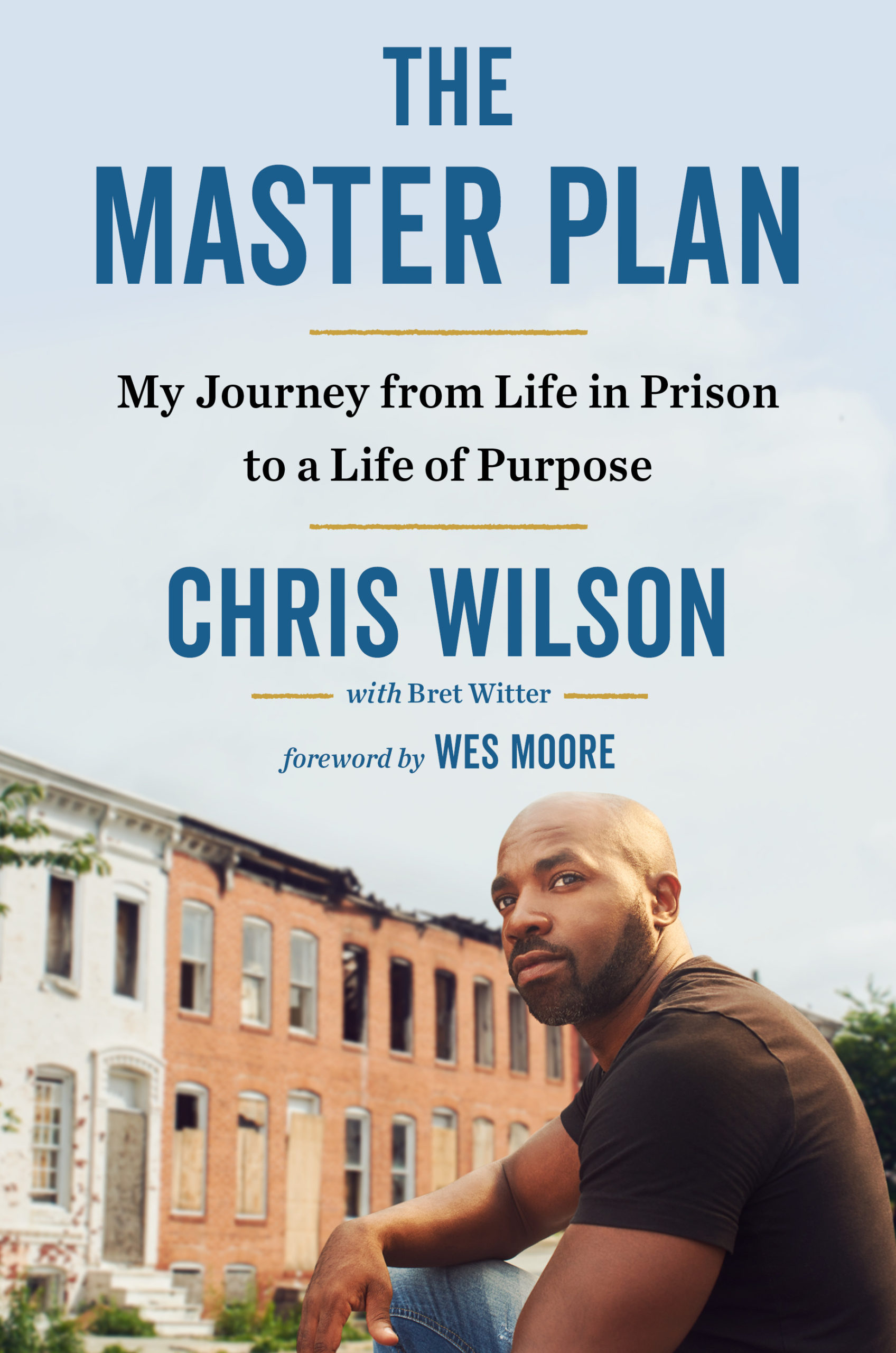
Larry Ossei-Mensah and Mario Moore
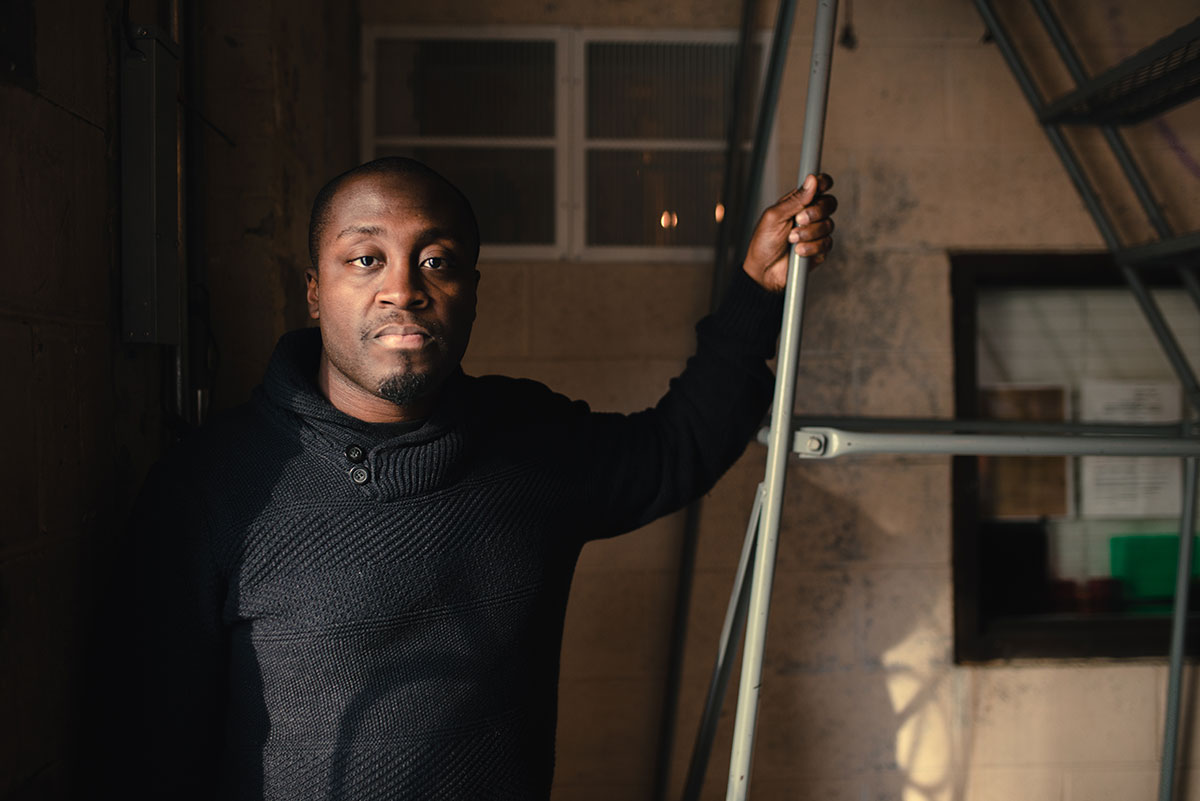
Photo Credit: Miranda Barnes
Larry Ossei-Mensah, MOCAD’s Susanne Feld Hilberry Senior Curator uses contemporary art as a vehicle to redefine how we see ourselves and the world around us. The Ghanaian-American curator and cultural critic has organized exhibitions and programs at commercial and nonprofit spaces around the globe from New York City to Rome featuring such artist as Firelei Baez, Allison Janae Hamilton, Brendan Fernandes, Ebony G. Patterson, and Stanley Whitney to name a few. Moreover, Ossei-Mensah has actively documented cultural happenings featuring the most dynamic visual artists working today such as Derrick Adams, Mickalene Thomas, Njideka Akunyili Crosby, Federico Solmi, and Kehinde Wiley.
Ossei-Mensah is also the co-founder of ARTNOIR a global collective of culturalists who design multimodal experiences aimed to engage this generation’s dynamic and diverse creative class. Ossei-Mensah is a contributor to the first ever Ghanaian Pavilion for the 2019 Venice Biennial with an essay on the work of visual artist Lynette Yiadom-Boakye.
Ossei-Mensah also recently co-curated, with Dexter Wimberly, the critically acclaimed exhibition at MOAD in San Francisco Coffee, Rhum, Sugar, Gold: A Postcolonial Paradox co-curated. Fall 2019 Ossei-Mensah will be curating his second exhibition at the Susanne Feld Hilberry Senior Curator at MOCAD Crossing Night: Regional Identities x Global Context with Josh Ginsburg from the A4 Arts Foundation and Jova Lynne, Ford Curatorial Fellow at MOCAD.
Ossei-Mensah has been profiled in publications including The New York Times, Artsy, and Cultured Magazine, which recently named him one of seven curators to watch in 2019. Follow him on Instagram/Twitter at @youngglobal or www.larryosseimensah.com
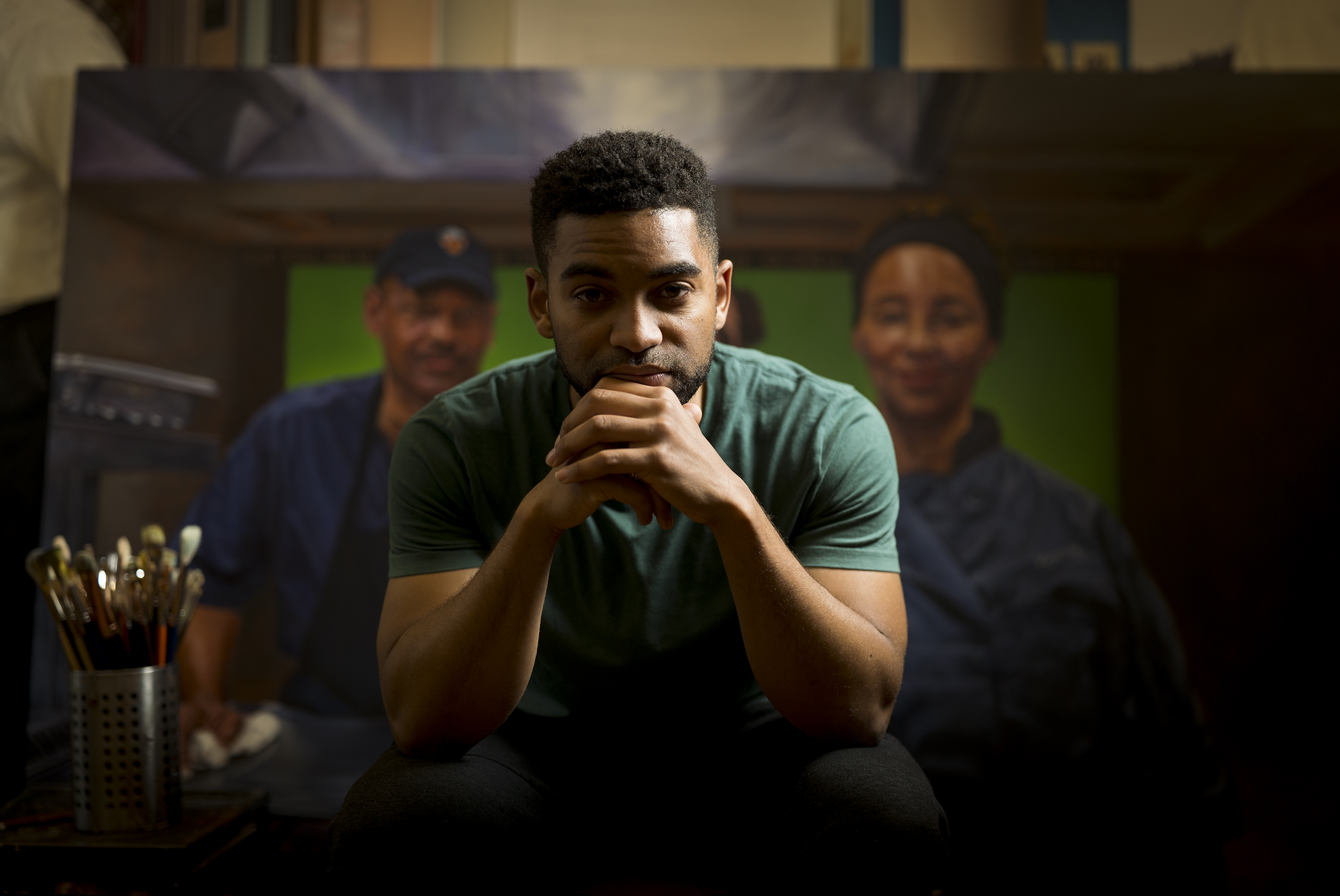
Mario Moore (b. 1987) lives and works in Detroit, MI. Moore received a BFA in Illustration from the College for Creative Studies (2009) and an MFA in Painting from the Yale School of Art (2013). He was recently awarded the prestigious Princeton Hodder Fellowship at Princeton University and has participated as an artist-in-residence at Knox College, Fountainhead residency and the Josef and Anni Albers Foundation.
Moore’s work has afforded him many opportunities– from multiple exhibitions and featured articles including the New York Times. His work is in several public and private collections which include the Detroit Institute of Art, The Studio Museum in Harlem and Princeton University Art Museum. Moore’s work has been featured in numerous exhibitions including The Smart Museum, Chicago; the Smithsonian Museum traveling Sites Exhibition; Xavier University Art Gallery, New Orleans; the Urban Institute of Contemporary Art, Grand Rapids, MI; David Klein Gallery, Detroit; and the Jeffrey Deitch Gallery, New York. He will have a solo survey exhibition at the Charles H. Wright Museum, Detroit, in 2021.
